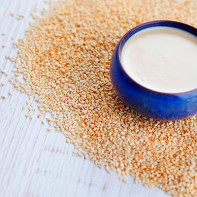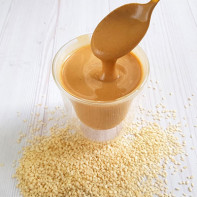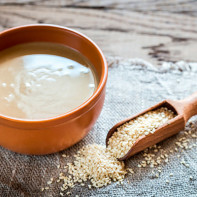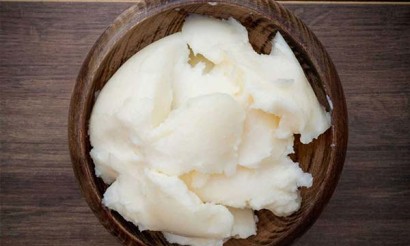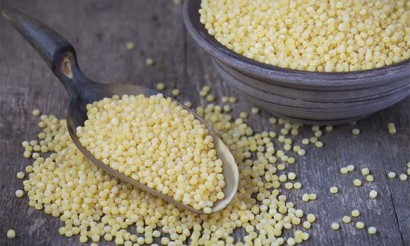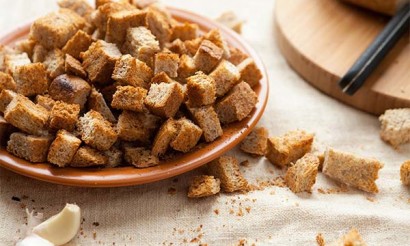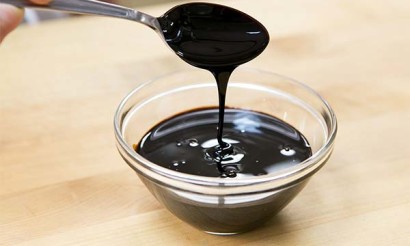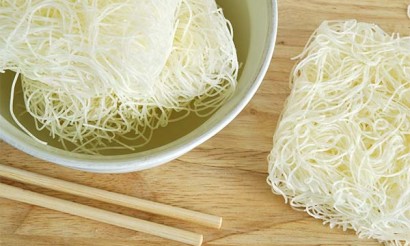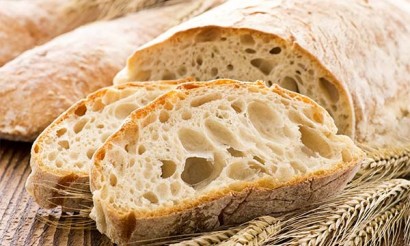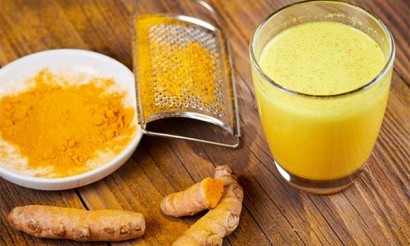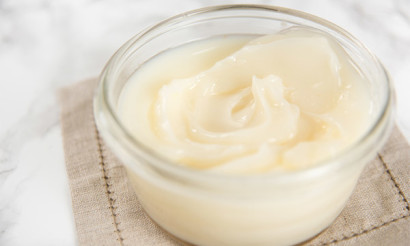Sesame paste: useful properties and contraindications
Tahini is a viscous and at the same time delicate paste, prepared on the basis of ground sesame seeds of white or unrefined black raw materials. Grinding the sesame seeds produces an oily and aromatic mass. The product has a sweet-tart taste and goes well with meat, bread, vegetables, fruits. Tahini is used to prepare sauces, such as hummus. There are a variety of uses for sesame paste. For example, in Greece it is used with honey, in Turkey with fruit syrups, in Iraq with date syrup, in the East with tofu cheese. In Iran, this paste is even used to make halva. It is a perfect food in its composition. When consuming sesame paste there is a saturation of the body with useful substances, a burst of energy is noted.
- Composition and calories
- Useful properties of sesame paste
- General benefits
- For Women
- For Men
- In Pregnancy
- For breastfeeding
- For children
- For weight loss
- Cooking Applications
- Hummus
- Exquisite Tahini with supplements
- Hazards and Contraindications
- How to Choose and Store
- How to Make Sesame Paste at Home
- How to take properly sesame paste
- What to eat with
- Interesting facts about sesame
Composition and calories
At the heart of the product is sesame. The kernels are first roasted, crushed, and mixed with vegetable oil. Useful substances are better absorbed when the oily cream is used than when sesame oil is used in its pure form. Outwardly it is a thick mass of light beige color.
The caloric value of 1 tbsp. of the product is high - 85 kcal. In 100 grams of tahini - 586 kcal. The content of fats, carbohydrates, proteins in 1 tbsp. - 7.2 g, 3.2 g, 2.6 g, respectively, in 100 g - 51 g, 18.5 g, 18 g. The product is rich in vitamins A, C, E, PP, group B (B1, 2, 5, 6, 9), minerals such as iron, manganese, calcium, selenium, sodium, phosphorus, zinc, magnesium, copper, potassium. Tahini contains phytoestrogens, healthy cholesterol, omega-3 and omega-6 fatty acids, methionine, which provides purification.
Useful properties of sesame paste
General benefits
The seeds contain valuable substances, the action of which is aimed at improving the condition of the skin and hair. It is noted a beneficial effect on the body for neurasthenia, diabetes (type 2), knee arthritis, depression, hypertension, atherosclerosis. Also tahini benefits the body with osteoporosis, as it contains a lot of calcium.
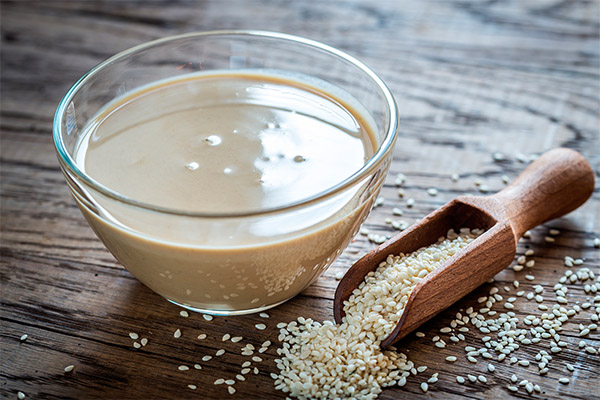
It improves brain activity, strengthens the bone, nervous and cardiovascular systems, because the product contains phosphorus, calcium, iron, copper. It also provides a positive effect on the teeth, strengthens blood vessels, cleanses the kidneys and actively produces red blood cells.
Sesame paste contains large amounts of omega-3 and omega-6, which are required to maintain a healthy brain and heart. The body does not produce these substances; they come with food. Omega-3 helps eliminate bad cholesterol. Increases the elasticity of vascular walls, their purification occurs. To benefit the heart and blood vessels, it is necessary to eat 2 tbsp. sesame paste daily for 45 days.
Thanks to the rich vitamin composition normalizes digestion and strengthens the immune system. Vitamin thiamine (B1) is found in large quantities in the pasta, and when you eat a portion of the product the body gets 16% of its daily intake. It is an important substance for muscle tissue, the digestive and nervous systems. Deficiency of the vitamin leads to deterioration of the digestive tract and heart.
Tahini contains substances necessary for immunity support - copper, iron, selenium and zinc. Under the influence of these substances is the production of white blood cells, destroying pathogens. Regular use of sesame paste can be regarded as the prevention of flu and seasonal colds. In addition, sesame product helps to recover faster after infections.
By consuming it, you can solve the problem of hair loss and get rid of the symptoms of zinc deficiency, such as diarrhea, impaired taste and vision, poor appetite, impotence, skin rashes. It is enough to eat 100 grams of tahini every day. Such an amount of paste contains 10 mg of zinc, which is as much as 70% of the daily norm.
Since tahini refers to products with a high content of zinc, such paste is recommended to eat with acne. The daily norm of zinc is 11 mg. It is allowed to increase the daily dose of the mineral up to 40 mg.
The product is recommended for use in disorders of digestion and constipation. Sesame in the form of paste is better digested than whole sesame seeds. Because it contains fatty acids, it normalizes the function of the liver and gallbladder. As a result, the body receives nutrients, and tahini helps digest heavy foods faster.
For women
Since the components include phytoestrogens, the body is rejuvenated, the condition of hair and skin is improved. During menopause, these substances have a positive effect on progesterone and estrogen levels, helping to combat the negative effects of hormone imbalances.
If every day you add a little paste (2-3 tbsp.) in food, you can significantly improve health and mitigate the negative effects of menopause, such as mood swings, weakness, hot flashes. Phytoestrogens also reduce the risk of cancer. We are talking about pathological conditions related to hormone levels, such as ovarian and breast cancer.
Sesame paste contains substances for maintaining a healthy and attractive appearance. The product is used not only for internal use, but also externally. For example, tahini is applied to the hair and skin. Thanks to the rich content of fatty acids and vitamins, the skin looks taut and the hair looks shiny.
For men
A paste based on sesame is a natural product that has a positive effect on erection and libido. It contains zinc, which is important for the production of hormones in the male body. This microelement is contained in tahini in the same quantity as in oysters. The difference between the aphrodisiac and the sesame product is only in the price.
Polyunsaturated fatty acids help to get rid of depression and chronic fatigue, return strength to the male body and confidence in their abilities. Serotonin production is stimulated, which is associated with libido and lack of tension.
Erectile dysfunction can also occur due to other reasons, for example, high blood pressure. Omega-3 and vitamin E help to get rid of the problem or reduce the degree of its manifestation. As a result of their normalization blood pressure is reduced and testosterone is produced. Daily recommended to take 3-4 tbsp. sesame paste.
Pregnancy
Oilseed grains are useful for future mothers. But there are some restrictions, and it is worth adhering to them. To avoid developing anemia during pregnancy, it is recommended to include tahini in the diet. The 2 tbsp of paste contains 1 mg of iron, the daily rate during this period is 27 mg, during other periods of life - 18 mg.
Sesame is a source of calcium, which is necessary for pregnant women for bone health and the complete formation of the child's musculoskeletal system. Regular consumption of sesame product increases immunity, strengthens teeth, prevents constipation, normalizes urination and improves the general condition. It also manages to get rid of anxiety and fatigue, reduce the effects of stress (the paste contains niacin).
Regarding restrictions, some doctors advise against the product in the first trimester, as there is a risk of miscarriage. In addition, the product can provoke the development of an allergic reaction, which is important to consider if you are prone to allergies. In any case, you should not abuse tahini, it is advisable to consult a doctor.
When breastfeeding.
Sesame is useful during lactation, its components improve the production of breast milk and increase its nutritional value. Since the product has an anti-inflammatory effect, it reduces the likelihood of mastitis, lactastases. Sesame helps to solve the problem of hair loss. A woman's body needs 1 tsp. of tahini daily to restore normal calcium levels. However, it is advisable to use sesame in its pure form.
Before including sesame paste in your diet, there is one important thing to consider - it can be introduced at least 3 months after the birth of the child. Contraindications include thrombophlebitis, high blood clotting, intolerance to the components and tendency to allergies. When a baby has colic, sesame paste is also not used. Like other products, it is introduced into the diet in moderation.
For children
From sesame, children's bodies get a lot of useful substances. Children are given sesame in any form only after 1 year of age. The daily rate for a child - 1 tsp. There are no strict limits on age, but because of the risk of allergies and not fully formed digestive system, there may be adverse reactions. The optimal age is 3 years old. Unprocessed seeds do the most good for children's bodies. Sesame products can be given to children with lactose deficiency. But still do not get carried away with this product.
When losing weight
Thanks to the methionine content, there is a purification of the body, the load on the liver is reduced, and the process of weight loss is launched. Despite this fact, you should not get involved in tahini, if you want to get rid of excess weight, because this paste is caloric. It will be enough to eat a few tablespoons of the product a day.
Cooking Applications
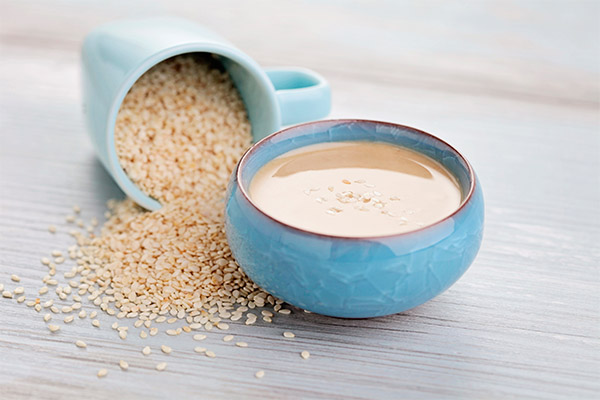
Sesame paste is widely used in cooking. From it prepare falafel, hummus, bean dishes, pies. The paste is also added to vegetables, meat, fish, gravies and sauces. Tahini is used as an ingredient for sweets such as halwa and to prepare noodles and Indian dishes. The most important condition is the selection of quality seeds.
Hummus
Ingredients:
- sesame paste - 100 g;
- boiled chickpeas - 400 grams;
- olive oil - 2 tablespoons;
- lemon juice - 50 gr;
- Garlic - 1 clove.
Preparation:
- Mix the paste with the rest of the ingredients. The garlic is pre-mashed.
- To get hummus, the mixture is whipped with a blender, add salt and pepper to taste.
The sauce is used with bread, hard-boiled eggs, fish, meat and vegetables in a stew.
Exquisite tahini with additives
Ingredients:
- sesame seeds - 200 g;
- vegetable oil - 90 gr;
- half a lemon for juice;
- garlic - 3 cloves;
- parsley, salt, pepper to taste.
Preparation:
- The grains are dried, stirring constantly.
- Cooled raw materials is ground into crumbs with a coffee grinder or blender.
- To the sesame seeds add oil and garlic. The mass is mixed until homogeneous.
- If you plan to store it for a long time, put it in a glass or porcelain dish and put in the fridge. If you plan to use it immediately after cooking, add chopped parsley, pour the juice and add salt and pepper, depending on taste preferences.
The taste of the finished product is rich. Lemon juice gives it a subtle sourness.
Harms and contraindications
Despite the high value of sesame product for the body, there are also contraindications:
- Pathological processes in the liver and gallbladder, diseases in which pancreatic disorders are noted. In the chronic course due to excessive intake of fat in the body, vomiting and diarrhea occur, there is severe pain in the affected area.
- Obesity. The product has a lot of calories, so the ban on its use is quite understandable, especially if work is carried out to reduce excess weight. The maximum dosage is 1 tbsp. per day.
- Allergies to seeds and nuts. If skin rashes, shortness of breath, runny nose and swelling in the eye area are observed when consuming such food, the product should not be introduced into the diet.
- Varicose veins. There is a risk of increased blood clotting.
Abuse of tahini can cause negative reactions even in the body of a healthy person. The negative effects of uncontrolled use of the product include upset stomach and nausea. People with diseases that are on the list of contraindications can feel even worse.
The maximum daily dosage for a healthy body should not exceed 5 tbsp. Useful substances are better absorbed when the paste contains garlic and lemon juice.
How to choose and store
It is not unimportant where sesame was grown and the paste was made. It is believed that the best flavor is inherent in products produced in the Middle East (Israel, Palestine, Lebanon).
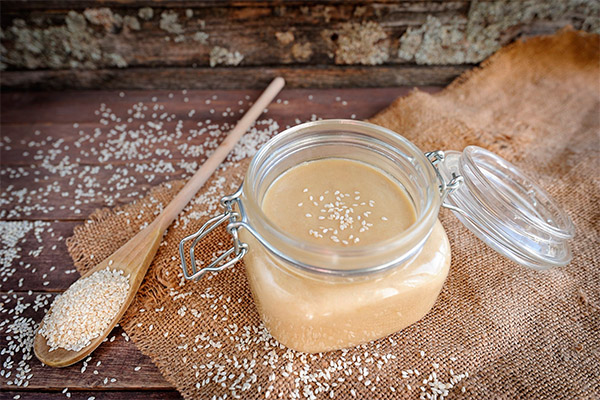
When buying pasta from Cypriot, Turkish or Greek producers, keep in mind that the taste will be less intense. Also, tahini from these countries are less flavorful.
It is advisable to choose the sesame product in stores that sell healthy food. There sesame pastes are healthier because they are made from raw materials that have not been exposed to chemical fertilizers. There are no preservatives or flavorings in the finished product.
Before consuming the store product, it is necessary to stir the contents of the jar well. As a result, the oil will be evenly distributed and the taste of the paste will be more pleasant. Store tahini is also stored in the refrigerator. Usually the shelf life is 6-24 months. However, keep in mind that prolonged storage can have a negative impact on the taste (instead of a delicate taste there is an unpleasant bitter taste).
In eco-stores sesame pastes have the shortest possible shelf life, they are the most natural and are great for when tahini is quickly eaten. The lack of preservatives is no small advantage. They usually have a shelf life of about 1 month. Spoiled product is dangerous, eating it can end in poisoning, so it is better to send it immediately to the trash.
How to make sesame paste at home
Sesame paste is prepared quickly, the main thing is to follow the simple recommendations. Prepare not only salty product, but also sweet. For this purpose, condensed milk, honey, various syrups, sugar are introduced into it. The finished dish turns out rich and has a homogeneous structure.
Sesame paste
Ingredients:
- sesame seeds - 200 g;
- vegetable oil (almond, olive or sesame oil) - 70 g.
Preparation:
- Sesame is left in cold water for 2 hours, then the water is drained, the raw material is left to dry.
- Then proceed to roasting the seeds with minimal heat. For this purpose, a dry frying pan is used. The process lasts about 10 minutes, as a result the product should acquire a creamy hue.
- The cooled grains are ground with a blender into crumbs and thoroughly mixed with butter until a paste. The oil is poured in gradually.
The paste is stored in the refrigerator in a glass container. Use it as a separate dish and in combination with other products. Peppers, herbs, garlic can be used as additives when mixing the ingredients.
How to take sesame paste correctly
When buying a ready-made store-bought product, you need to pay attention to the composition. Quality tahini contains sesame seeds and oil. In addition to natural flavors, it should not contain anything unnecessary. Forbidden components are preservatives, flavorings and sugar. Before using, be sure to stir the contents of the jar, otherwise there will be too much oil in the paste, because it collects on top. The norm per day is 2-3 tbsp. Otherwise you may become overweight and develop adverse and allergic reactions.
The optimal time for eating sesame product is before 12 o'clock, because at this time of the day the metabolism in the human body is carried out most quickly and the useful substances are better absorbed. You can also eat tahini for lunch, but only one spoonful without a spoonful. Taking food with tahini or sesame paste in pure form for dinner is not recommended because fat will accumulate.
What is eaten with.
It is usually eaten with something, not taken alone. Tahini is used as an additive to dishes. In addition to olive oil, it is mixed with garlic, lemon juice, cumin powder, hot peppers, and herbs for a special flavor. It can also be served as a gravy or eaten with bread, crumbs, pita bread. The pasta is mixed with jam in the ratio of 1:1. The product is spicy with the addition of sumac, paprika and garlic. This sauce goes well with fish and meat dishes and fresh vegetables. Tahini can also be used to create desserts.
Interesting facts about sesame
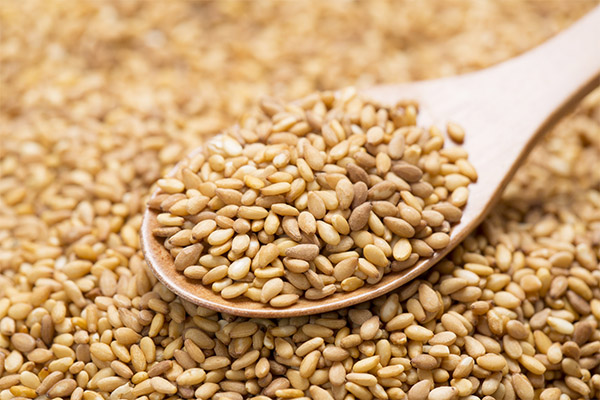
- Sesame belongs to the heat-loving plants, it is grown mainly in Africa, India, Asia. Because of the attractive appearance of the plant, it is often used for decoration.
- In ancient times, only one name was used, "sesame", which translates as "oil plant".
- Different varieties are grown, respectively, the color of the fruit is also different, it can be beige, black, yellow, red, brown. Slightly different and taste qualities. The darker the kernels, the more aromatic they are.
- Oil from sesame seeds has a long shelf life - 9 years, while its benefits are not reduced.
- Both in seed and oil form, sesame is used for medicinal purposes.
- Sesame seeds have a bitter aftertaste when peeled.
- It is an excellent ingredient for skin care products; the substances it contains ensure a healthy appearance of skin and hair. Since the oil can protect against UV damage, it is added to sunscreens. Using the oil for skin care evens out the complexion and shrinks pores.
- In Eastern countries sesame is often used in the form of tahini. The crushed seeds with oil taste like nuts.
- In ancient times it was believed that the plant allows you to obtain immortality. This is true in part because the seeds rejuvenate the body and are used as a source of longevity.
- Sesame seeds contain sesamin, a powerful antioxidant powerhouse. The use of sesame in the diet helps the body in the fight against cancer, reduces bad cholesterol.
Sesame is a set of valuable substances to maintain health and attractive appearance. They use it in pure form, and for cooking, and in cosmetology, and for treatment. The possibilities of using the product are wide. Sesame paste is delicious and healthy when used in moderation and without contraindications. When used properly, sesame paste is beneficial in any form.
«Important: All information on this site is provided for informational purposes only purposes. Consult a health care professional before using any recommendations. specialist before using any of the recommendations. Neither the editors nor the authors shall be liable for any possible harm caused by materials."

